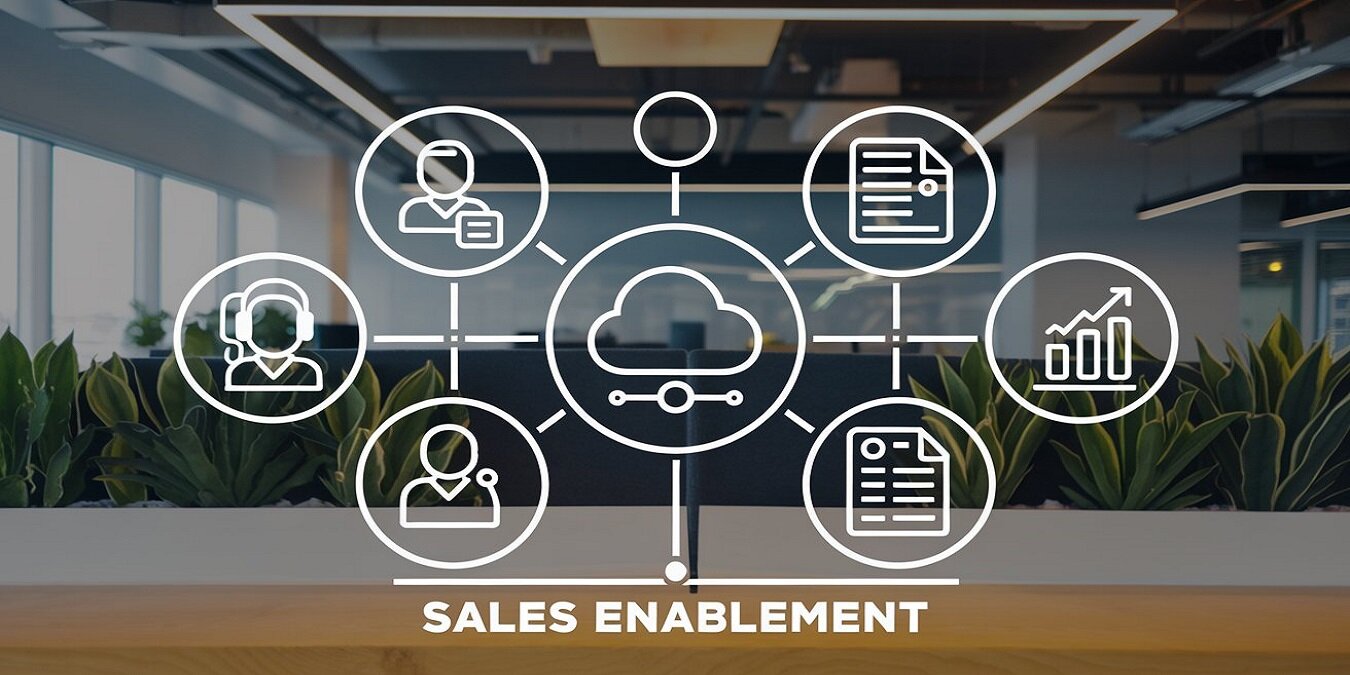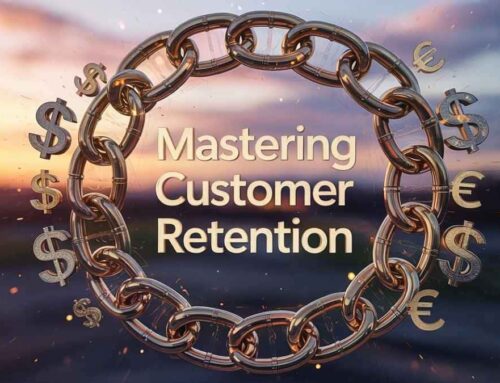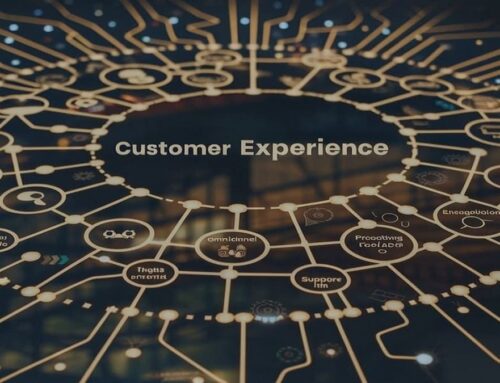
Sales Enablement
Sales teams are the driving force behind revenue generation in any organization. But are you equipping your team with the right tools, resources and knowledge to help them perform at their best? This is where Sales Enablement comes in. It’s more than just a buzzword; it’s a strategy that empowers your sales team to succeed by aligning them with the right information, processes and technology.
Do you have a well-oiled sales enablement strategy in place or is your team still navigating through outdated processes?
Let’s dive into the core of sales enablement and explore how you can drive success within your team by providing them with the tools they need to close deals and exceed targets.
What Exactly Is Sales Enablement?
At its core, sales enablement is the process of providing your sales team with the information, content and tools they need to sell effectively. But it goes beyond simply arming them with product knowledge. It’s about fostering a strategic alignment between sales and marketing, ensuring both departments work hand in hand to provide consistent, valuable resources to potential customers.
Think of it as giving your sales team a GPS. Instead of navigating blindly through leads and prospects, they now have a clear roadmap to follow, helping them get from point A to point B with precision.
Now, why is this so crucial? Because without the right resources, your team may be wasting time on the wrong leads, struggling with outdated information or losing deals they could have easily closed with the proper insights.
Why Is Sales Enablement Critical to Your Business?
Let’s face it, sales is more complex today than it was a decade ago. Buyers are more informed and the competition is fierce. Sales enablement helps your team keep up by offering:
- Better access to valuable information: With the right knowledge and data, your sales team can have more meaningful conversations with prospects, which is key to building trust.
- Alignment between sales and marketing: When sales and marketing work together, the content created is more relevant, the messaging is clearer and the overall strategy becomes more cohesive.
- Efficient use of time and resources: Sales reps spend less time searching for the right information and more time doing what they do best, selling.
Here’s the thing: without sales enablement, you might be setting your team up for failure. They’ll be fighting an uphill battle with inconsistent messaging, unclear strategies and inadequate tools.
Key Components of Sales Enablement
Sales enablement isn’t a one-size-fits-all solution. It encompasses a variety of elements, each working together to help your sales team achieve optimal performance. Here are the key components you should focus on:
- Content Creation and Distribution
Creating the right content at the right time can make all the difference in a sales cycle. Does your team have access to relevant case studies, whitepapers and testimonials when they need them? And more importantly, do they know how to use them effectively?
You should be providing:
- Case studies that show potential buyers how your product has helped similar companies.
- Whitepapers and reports that position your brand as an industry leader.
- Testimonials that build trust and credibility.
- Training and Development
No matter how talented your sales team is, they need continuous training to stay updated with the latest sales techniques and industry trends. Your training program should be comprehensive, covering everything from product knowledge to objection handling and closing techniques.
Consider implementing:
- Onboarding programs to help new hires quickly ramp up.
- Ongoing training sessions to help experienced reps refine their skills and adapt to market changes.
- Workshops and webinars that focus on soft skills like communication, negotiation and relationship-building.
- Technology and Tools
Does your sales team have access to the best technology to help them succeed? From customer relationship management (CRM) systems to sales automation tools, the right technology can streamline processes, making it easier for reps to manage their leads and focus on selling.
Some essential tools to consider:
- CRM systems to track and manage interactions with prospects and customers.
- Sales automation tools to automate tasks like follow-up emails and appointment scheduling.
- Analytics platforms to provide insights into sales performance and opportunities.
- Data and Analytics
Sales enablement isn’t just about providing information; it’s also about tracking results. By analyzing data, you can measure the effectiveness of your sales enablement efforts and identify areas for improvement.
Some key metrics to track include:
- Win rates: Are your reps closing more deals after implementing sales enablement strategies?
- Sales cycle length: Has the time it takes to close a deal decreased?
- Content engagement: Are prospects engaging with the content you provide and is it influencing their decision-making process?
Addressing the Challenges in Sales Enablement
While sales enablement can empower your team to succeed, it doesn’t come without its challenges. Implementing a successful strategy requires careful planning and execution. Here are some common challenges you might face:
- Lack of Alignment Between Sales and Marketing
A disconnect between sales and marketing can undermine your sales enablement efforts. If marketing is creating content that doesn’t align with the needs of the sales team, it won’t be used effectively. This is why continuous collaboration is critical.
- Inconsistent Messaging
Inconsistent messaging can confuse prospects and lead to lost deals. Your sales enablement strategy should ensure that all messaging is cohesive, aligned with your brand and tailored to each stage of the sales cycle.
- Resistance to Change
Sales teams can be resistant to new processes and tools. That’s why it’s important to involve your team in the enablement process from the beginning, showing them how it will benefit them and ultimately make their jobs easier.
Steps to Build a Successful Sales Enablement Strategy
Now that we’ve discussed what sales enablement is and why it’s important, let’s talk about how to build an effective strategy for your business.
- Audit Your Current Sales Process
Before implementing any new strategies, it’s important to assess where you currently stand. Conduct a thorough audit of your sales process to identify pain points, gaps in knowledge and inefficiencies.
Ask yourself:
- Where does the sales process slow down?
- Are there any common objections that are not being effectively handled?
- What information is missing during key points in the sales cycle?
- Collaborate with Your Sales Team
Your sales team is on the front lines, so it’s crucial to gather their input. What challenges do they face daily? What resources or information do they wish they had? Their feedback will provide invaluable insights into the types of tools and content they need.
- Create a Clear Content Strategy
Content is a central part of sales enablement, but only if it’s used correctly. Work with both your sales and marketing teams to create a content library that includes a wide variety of resources, each designed for different stages of the buyer’s journey.
Make sure your content:
- Is easy for your sales team to access and understand.
- Provides real value to prospects, addressing their pain points.
- Is regularly updated to remain relevant.
- Leverage Technology
Don’t underestimate the power of the right tools. Invest in a CRM that allows your team to easily manage leads and track interactions. Utilize automation tools to handle repetitive tasks so your team can focus on selling.
- Provide Continuous Training
Sales enablement isn’t a one-time effort. Continuous training is essential to ensure your sales team stays sharp and up-to-date. Create a program that includes regular workshops, role-playing exercises and access to industry trends.
- Monitor, Measure and Adjust
Sales enablement isn’t a “set it and forget it” process. Regularly monitor the performance of your strategy by tracking key metrics. Is the sales cycle shortening? Are close rates improving? Use this data to make necessary adjustments and optimize your efforts over time.
Final Thoughts: Empower Your Team for Success
Sales enablement is not just about giving your team more information. It’s about providing them with the right tools, content and strategies to help them excel. By empowering your sales team with the knowledge, resources and support they need, you’re setting them up for success in a competitive marketplace.
So, are you ready to take your sales team to the next level?
Empowering your sales team through a robust sales enablement strategy is not just about closing more deals. It’s about transforming your organization’s approach to sales, aligning your departments and ultimately driving more revenue.
Take the first step today and watch your sales team thrive like never before.














